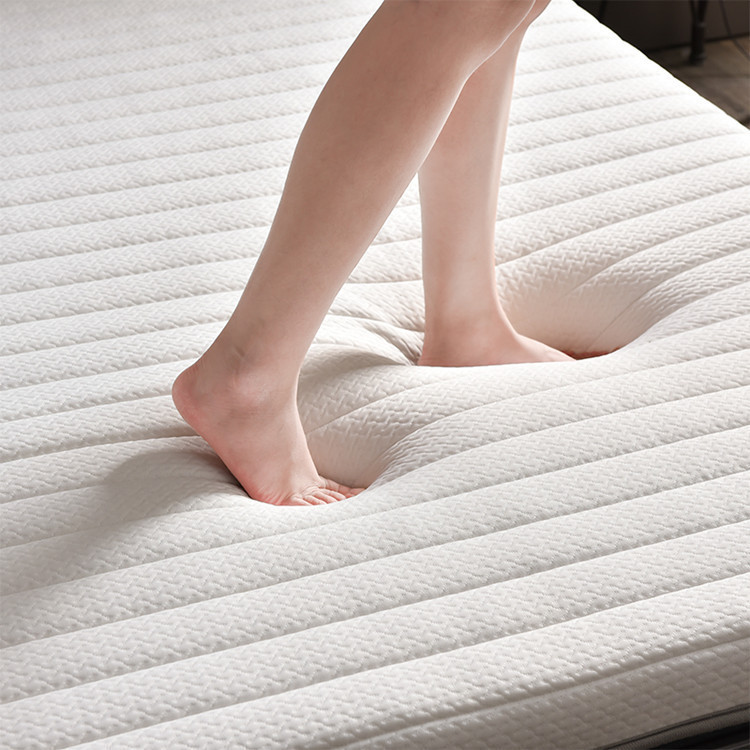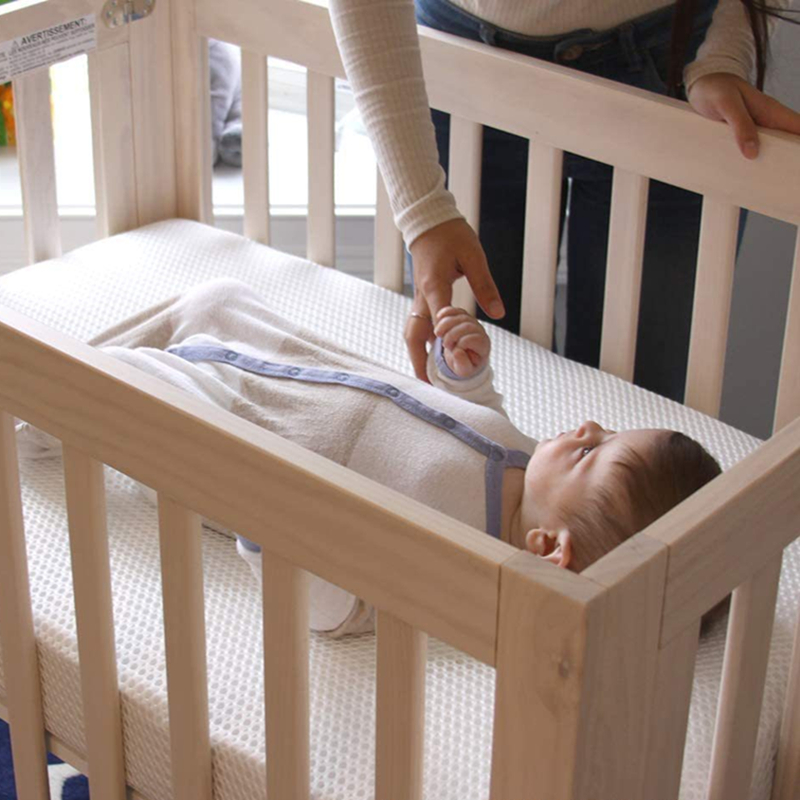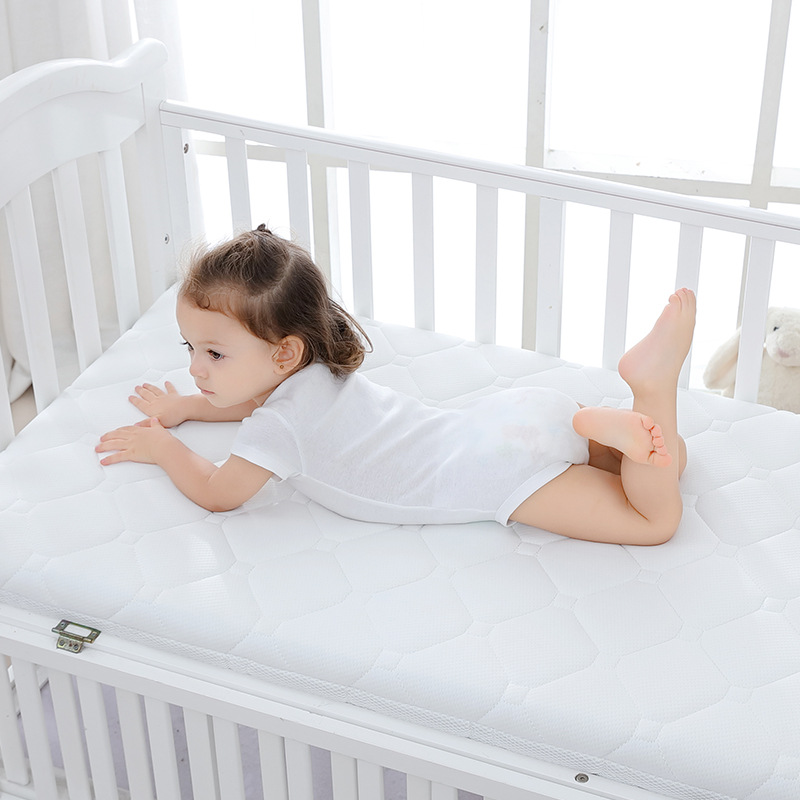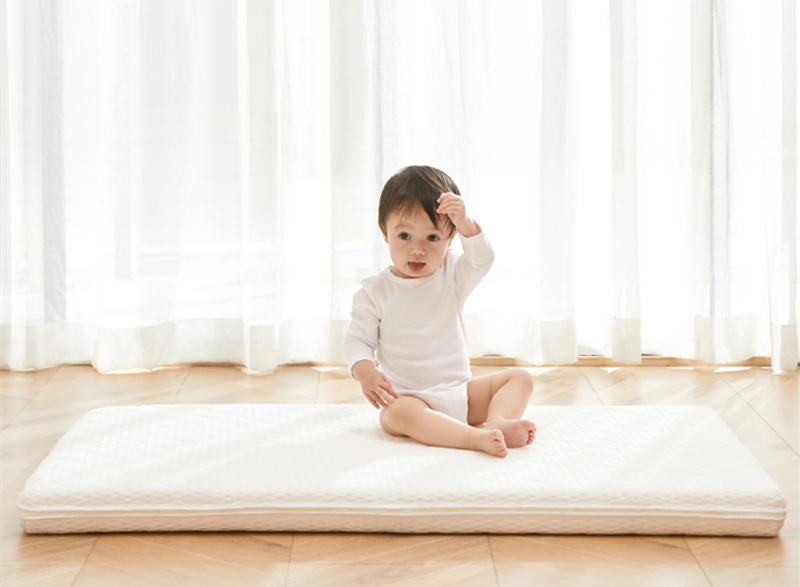Choosing the right mattress for your baby will optimise the chances of you both getting a good night’s sleep! The safest place for your baby to sleep is in a moses basket, crib, cot or cot bed in your room for the first six months and a safe mattress should fit their bed with no gaps.
Here are a few things to look out for when choosing a mattress for your newborn baby…
Getting the right size and shape of mattress is essential so your baby cannot get their little limbs stuck around the sides. There should be no more than a 3cm gap around the edges or sides, so you can tuck your baby in comfortably, with any blankets no higher than around their shoulders.
Many cots and cot beds are sold alongside mattresses designed specifically to fit the cot size. Some may have a sticker on the base recommending the right size. Your mattress will need to be at least 8 to 10cm deep to support your baby while he sleeps, although your crib mattress or mattress for your moses basket will be thinner. There are companies who will provide a made-to-measure baby mattress if you can’t find the size you are looking for. Make sure any mattress your purchase conforms to both BS 7177 1996 for flammability and Part 10 1997 for safety and performance.
Ensure your mattress has good breathability to help your baby regulate their temperature because research has shown that overheating is associated with an increased risk of SIDS. A breathable mattress will allow any perspiration to wick away from your baby, so their mattresses stays dry.
If asthma or allergies are a concern in your family, you may want to choose a hypo-allergenic or anti-allergenic cover for your mattress, which can be washed at 60 degrees to remove dust mites that may cause allergies.
· Foam: Generally, the cheapest, foam mattresses are lightweight and provide good support. They often have a PVC wipe-clean material one side so are easy to keep clean. They tend to lose their shape over time, so are better for short-term use in a moses basket or crib.

· Coil Sprung: A traditional and popular choice with many parents, these mattresses have a coil sprung interior with layers of foam or felt padding, that allow for increased airflow. They are supportive and will keep their shape well over time.

· Pocket sprung: Similar to coil sprung mattresses, each spring in these mattresses has a pocket to provide better support and longevity. These are an expensive choice and not cost-effective unless your baby will sleep on the mattress for a number of years, or you may use the mattress for another child.

· Double-sided: Some mattresses will have a firmer and flatter side for use from birth to pre-school, with a softer side to use when your child is older.

· Organic: Made from chemical and allergen-free natural materials such as bamboo, natural mattresses are good for families where allergies are a concern. They will also offer good support and be naturally anti-bacterial, moisture-wicking and breathable.
All baby and child mattresses have an outside fabric layer and a waterproof side. Some may not be removable for washing, so remember to clean these regularly by wiping it down or vacuuming it. You may wish to buy a special mattress cover for ease of cleaning.
Specialist retailers also sell different types of covers such as anti-fungal, anti-allergy and anti-bacterial covers, organic covers and heat-regulating and moisture-wicking covers to prevent your baby overheating. Your choice will depend on your budget, your personal choice and how long your plan to use your mattress.
Tel:+86-18561845414
Mobile:+86-18561845414
Email: [email protected]